
| What is Flavor and Fortune? |
| How do I subscribe? |
| How do I get past issues? |
| How do I advertise? |
| How do I contact the editor? |
Read 13032293 times
Connect me to:
| Home |
| Articles |
| Book reviews |
| Letters to the Editor |
| Newmans News and Notes |
| Recipes |
| Restaurant reviews |
| Article Index (all years, slow) |
| List of Article Years |
| Article Index (2025) |
| Article Index (last 2 years) |
| Things others say |
| Related Links |
| Log In... |
| Authors |
| Categories & Topics |
Staple Foods: Rice and Wheat
| by Jacqueline M. Newman |
Rice, Noodles, and Other Grain Foods
Winter Volume: 2018 Issue: 25(4) pages: 9 to 14
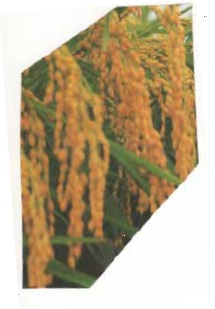
Rice can be in several colors, red, black, or brown, the latter polished and white, and the kind most Chinese prefer, that is if they can afford it. Southerners like rice at most meals. If they are Cantonese, they also like it wrapped in lotus leaves and steamed, as seen on the cover of this issue with another dim sum food. They also like it in the morning as congee, they like it with dim sum or snack foods, they like it as red or black rice, and they like it every which what way. Most like every rice, be they indica or Japonica rices.
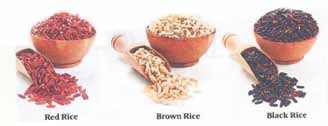
In China, all rice is called fan, a Chinese word that can also mean a ‘meal’ or more accurately ‘have you eaten today?’ They like Indica rice that in Chinese they call xian; it is a non-glutinous rice that can be long or short grain rice; they like Japonica rice that the Chinese call geng and most often is a fat short-grain rice that is glutinous and sometimes called ‘sticky rice’.
Yes, there are many different rice varieties, long or short, fat or thin, and they like the three most common rices that can be white which is polished brown rice, brown rice before it is polished, red rice and black rice. The brownish-black one they like even though it is commonly called “forbidden rice” as seen by the peasant picking it.
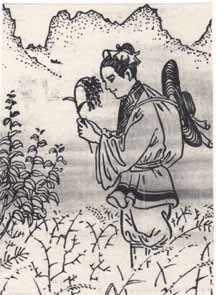
Commonly seen picked here by a peasant of the past. In days gone by, black rice was only for royals to purchase and eat. Red rice was once called‘ ‘blood rice’, and it could be glutinous and called ‘sticky rice’ non-glutinous or fat and sticky, most often the former. They also liked rice known as ‘fragrant rice.’ that some did call ‘Thai rice’ or ‘aromatic rice,’ that has a sweet aroma, hence its name.
Recent archeological finds in Hemudu in the Eastern Zhejiang Province is this particular rice, and other kinds of rice found at archeological sites. Others were found in digs from thousands of years ago. We know that because different rice varieties are mentioned on oracle bones circa the Shang Dynasty (16th to the 11th centuries BCE). Then and now they were and are staple Chinese rice grains grown best in warm climates, not colder ones.
Chinese Emperors, concerned with adequately feeding their people, did what they could to distribute staple grains to their people in need. They saw to it that their peasants who grew it had enough rice to eat. To do so, they did collect taxes from them to pay for these staples; they taxed them and their leaders to distribute them. One Emperor, Zhen Zong who reigned from 999 to 1022 CE, did introduced a drought-resistant variety to help produce more rice in a given area. Doing so increased his coffers, too.
In Southern China, most people prefer polished white rice, if they can afford it; and they eat it at least twice a day, often at every meal in one form or another. In addition, Chinese make different dishes to flavor their rice; and these they call their ‘cai’ dishes, but if they live mostly in the north, they can call them their sung dishes.
In mornings, Cantonese people like foods they call ‘snack foods’ or dishes they call ‘dim sum’ dishes. These are popularly served in large restaurants, and served in steamer baskets, some seen on this page, and often wheeled around in carts or carried on trays to their customers. These can be made with rice or wheat exteriors, are often small items, and often seen three to a dish. These are tasty, creative, and loved.
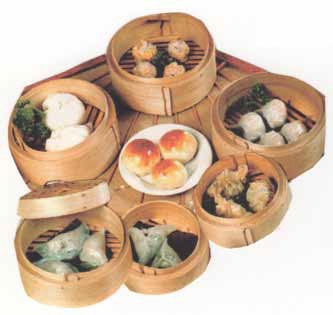
Wheat is an other main staple grain. It is popular as noodles and as exteriors for dumplings, also thought of as snack foods. They are most popular in China’s north where they are called dien tsin. Some call them hun ton, which in English is their wonton. The exteriors can be wheat, steamed bread or buns, or look-a-likes made with other flours. These and all staple foods are seen in many ways. They can be wrapped foods, part of a dish, or simply a plain food with or without a sauce.
To make them, wheat or other grains are dried, ground into flour, and used adding a little water or another liquid. The flours can be made from water chestnuts, lotus roots, or another staple food. They can be made into noodles or a dough, used to wrap other foods, or used to flavor yet other cai foods. Some of these flours are bleached or colored, some made with dried ground vegetable juices, some not, but most are made into breads, buns, noodles, wraps, or other things.
Wheat flour can be pastry flour with gluten removed, semolina flour which is another flour, from whole grains, durum wheat hard or soft, or a ground spring wheat. Durum wheat is the hardest of all wheat flours, and it makes great pasta, great couscous, great cereal, and even great pastries if its gluten is removed.
In China’s north, many different grains or seeds are made into doughs, wrappers, buns, or noodles. They are made into ever so many things. As such, they are served hot or cold, made thick or thin, and used in ever so many different shapes or ways. Eaten day and night, they appear on Chinese menus, are served fried in oil, with sesame paste, made as transparent dough or not, or as oodles of noodles. Some are even served with rice in the same dish. Flours alone or in combination make assorted breads, buns, or rolls such as shao bing, pao tzu or others. Some are stuffed as is kuo tieh or pot stickers, some is used in scallion or other pancakes such as shui-chien pao, or made into buns or various bakery products.
Also popular in China mostly in the morning are you tiao. These are deep-fried twisted dough sticks available on many street corners as breakfast food. They are leavened, crispy, golden, moist, tender, and with big porous cells. They are best eaten when hot and fresh out of the oil they are fried in, and many use hard red winter wheat, not soft flour, with salt, alum or sodium bicarbonate, or another leavening agent. We have yet to meet anyone who easily skips them in their early hours.
Chinese eat their staple foods with chopsticks or fingers, usually the former, often from a rice bowl or not, and if in one, they bring the bowl to their lips and shovel the rice or another staple food item into their mouths, hot or cold, and eat every grain; and they feel blessed to do so.
Young girls are taught not to leave a single grain in that bowl. If even one is left behind, they might get a pock mark on their face. This can mean no man will marry them because of this facial scar.
There are many sayings about these and other staple foods. In the south they can be about rice, in the north about wheat foods. If a southerner, they can be called a ‘rice bucket’ meaning lazy, if told they have an iron rice bowl; they are boring or have a boring job for life. If called a soft rice type, that can mean they are living off a woman. There are these and so many more sayings and their implications.
The previously mentioned black rice is popular in the Hunan Province. Several thousand years ago, it was believed highly resistant to disease and called xiang dao. Most had never seen it, most called it ‘forbidden rice’ because they were forbidden from purchasing it if they were not royalty.
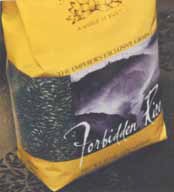
To the Chinese, staple foods symbolize civilization. Most common in central China, researcher Toyama says rice predates barley, was nurtured in ancient China, believed that in Longmagu Cheng in the southwest of Chengdu, that fortified town with its earthen walls, was a place where government ceremonials were adored and practiced. Many still believe this place is older than any other in China, and one to revere.
Many Chinese believe that rice was first produced in their country, not in India, and some say it began as a wild grass called newaree. They believe it was an ancestor of today’s rice, and they say that more than ninety percent of it grew in the area known as Monsoon Asia. Some tell us it was introduced to the US in 1694, grows best on irrigated land, land flooded during most of its growing season. Thomas Jefferson did grow some when he lived in Monticello. There, he said it yielded about 1800 pounds of edible grain for each pound of seed. Clearly, something to grow, eat, and adore.
The Chinese eat more rice, about 450 pounds per person each and every year. They plant lots of it along with millet, the latter occupies about fifteen percent of all cultivated land in China; rice even more than that. They use millet to extend wheat or rice to fill their bellies, and most know millet is a low-yielding crop that grows in regions where agriculture is not well-developed.
Brown rice is more popular today than it was, many think it healthier, and it is. In the past, it was minimally processed, and yielded more grain per pound or per acre than white rice. Brown rice needs more water per acre than does white rice, and more time to cook than white rice does. Brown rice has bran and germ layers that keep it from spoiling, but only if minimally processed. It and white rice are from the same plant, but white rice needs to be further milled losing some weight, some nutrition, too, in its processing.
Aromatic rice was thought to be a treasure. Called Jasmine, it is often from Thailand. Basamati rice is often from northern India or Pakistan, or it can be a hybrid from the US. Sticky rice, also known as sweet rice or glutinous rice, does not taste sweeter than any other rice be it short-grain, medium-grain, or long-grain. All rice can be sold as par-boiled or converted rice, the only difference is how it is processed; and instant rice is enriched and lacks toothsomeness.
In China, rice shows up at breakfast tables as congee or hsi fan. It is bland, water-logged, and eaten with many other tasty items such as tsung tzu or rice dumplings. Often purchased from street vendors as long rice sticks made with wheat flour and leavening. At lunch, this meal can include rice or wheat dumplings, rice or wheat noodle dishes, or other rice or wheat foods. Dinners can include plain rice or rice made into composite dshes of meat and vegetables.
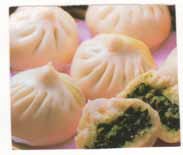
The Chinese believe traditional medicine sees rice as a neutral food with a sweet flavor. They say it strengthens the spleen, expels toxins, increases qi and energy, and that it is beneficial for the nervous system, helps relieve depression, and it can do many other helpful healthy things.
Staple foods are popular, can be steamed, boiled, or fried, and made into wontons, buns or breads, filled with ground meat, crab meat, vegetables, or all of them together. Many are boiled, pan-fried, or deep-fried, closed tightly or left open. In the south many call them shao mai; they are popular, too.
In China, one can purchase noodles as rolled dough, not cut by the vendor into any shapes or strips, the choice is that of the purchaser. At home, they can be cut and cooked as desired, bought plain or with egg in the dough, with or without potassium carbonate or benzoate of soda. Those who buy theirs uncut can cut them as desired, roll, pull, cut, or bang them into the shape they want.
To the Chinese, the nature of wheat is cooling, sweet or salty, and something that tones the kidneys, builds yin, nourishes the heart and mind, calms palpitations, treats insomnia, irritability, menopausal pain, and night sweats. Many say these are good for the obese, for those with growths or tumors, for those with cancers, eaten in small amounts, and by those with allergic reactions to wheat with or without gluten. Best used right after grinding, or kept in an air-tight container, many refrigerate theirs not to cause bloating, gas, indigestion, or an increased pulse rate.
An early sixth-century agricultural treatise, the Qinmin Yaoshu, known as the QMYS does describe how to make noodles two different ways. One uses a cow’s horn with half-dozen or more holes drilled near its tip as places to push out the dough. The other says to hold two fabric corners of a square together, to put holes in the fabric, then to squeeze the dough through it.
Noodles can be ‘peeled using a sharp knife cutting a chunk or ball of dough’ to send slivers flying into a large pot of boiling water. Some Shanxi chefs like to show off and place that ball or batch of dough on their shaven heads or washed bellies. They swiftly sliver it into rapid-fire motion getting it directly into their large pot of boiling water. Other chefs pinch pieces of dough, call them ‘cat’s ears’ or other names, and pinch them into the boiling water. Many noodle-types were made in 100 BCE in northern China, but only after they learned to grind their flour. Some noodles are hand-pulled, others tossed or swung over ones head. Some are twirled into various sizes and shapes. We once watched a noodle maker pull in a minute more than a thousand thin strands, as if by magic.
The above mentioned book has many noodle dishes stir-fried, pan-fried, used in soup, or with sauce. It speaks of them uncut as a symbol of longevity, and most know they are popular at later year or young folks birthdays. The Qi Min Yao Shu does include many noodle and bread dishes, and it provides ingredient amounts, even though written more than fifteen hundred years ago.
It was recently translated into English by Donald Harper, a historian at Boudwin College in Maine. His degree enabled him to translate it, share a bread recipe made with a grain drink from Han Dynasty times, and translate an early recipe from the Canon of Gastronomy for shao bing, a fire-baked bread, a bone-marrow bread, Chinese doughnuts called ‘Loops,’ pillow fried breads, puffs, and other home-made bread and noodle recipes including an extruded noodle recipe, dough made to go directly into boiling water, noodles slathered with butter, and other recipes.
In China, they have unearthed thirty-one sites from Neolithic civilizations seven or more are from thousands of years ago, a few more recent ones. One newspaper article shows noodles made of millet in an upside-down bowl in Lajia, which is in northwestern China from very early times. Archeologists also found rice planted in Taiwan from prehistoric times.
Cakes and pastries have been traced back even earlier, to Yin or Zhou Dynasties (16th century BCE to 771 BCE). During the Han Dynasty, wheat was commonly planted in China’s north, and made into many kinds of cakes. Nowadays, its ‘steamed bread’ or ‘steamed buns’ are found from and after the Han Dynasty (206 BCE to 220 CE). The Chinese did use different leavening agents in them, and they did remove gluten from hard wheat then, too.
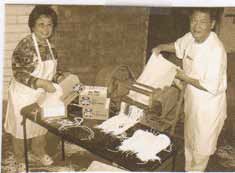
Mr. and Mrs. Yee, of Los Angeles, now use many ancient recipes from this early book. They own and make one hundred products in their family-run business called Wing Hing foods; these are distributed throughout the US and other places in North America.
A few recipes, old and new, follow. Enjoy making them, but do keep in mind that doing so improves with practice, good technique takes time. And do not over-work any dough because then the dough gets tough. Relax and enjoy your efforts.
| Zhua Fan, Uyghur One-Pot Rice |
|---|
2 cups rice
1. Wash the rice, then soak it for half an hour in cool
water.
|
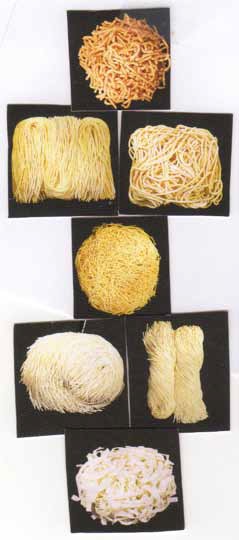
| Rice Congee With Vegetables |
|---|
1 cup unpolished rice left in boiling water four to six hours.
1. Soak rice for four hours, then rinse and drain.
|
| Spare Rib Congee |
|---|
½ pound spare ribs, separated, chopped into small pieces, and blanched
1. Put everything into a rice pot or cooker, cover with two cups of cold water, bring to the boil, then reduce the heat, simmer for forty minutes or operate automatically. Then stir and serve. |
| Silk Road Fried Rice |
|---|
1/4 pound shrimp, peeled, veins removed, each cut in ten pieces
1. Put all ingredients in a big pot, and stir-fry them for
three minutes, then reduce the heat, add 2 cups boiling
water, cover the pot, and steam for half an hour.
|
| Rice Balls |
|---|
½ cup glutinous rice flour
1. Mix rice flour, cornstarch, and sugar, then add 6
Tablespoons cold water, stir, and then add the two
tablespoons of vegetable oil stirring well.
|
| Rice Crust |
|---|
1 cup rice, boiled one minute, then simmered covered for half an hour
1. Spread rice half-inch thick on a cookie sheet, pat
down well, put in an oven on low heat, and bake until
it is dry and pulls away from the sides of the pan.
|
| Black Rice with Sweet Potatoes |
|---|
3/4 cup raw Chinese black rice, boiled until tender
1. Mix cooked black rice with salt and oil, stir well then
add the salt and oil, and stir again.
|
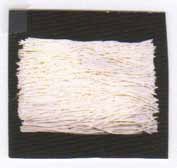
| Noodles In Soup |
|---|
½ pound dried noodles, rice, wheat, or others
1. Soak the noodles in hot water until soft.
|

Copyright © 1994-2025 by ISACC, all rights reserved
Address
3 Jefferson Ferry Drive
S. Setauket NY 11720